How to Make a Pillsbury Pie Crust Workable Again
In this world, at that place exists such a matter as perfect bakers. Yous know, people whose desserts always look like they were sent to hair and makeup on their way to the table. People who never, ever panic when their Swiss Buttercream seems to turn into a curdled mess. People who just "whip up" some cinnamon rolls on a weekend morning.
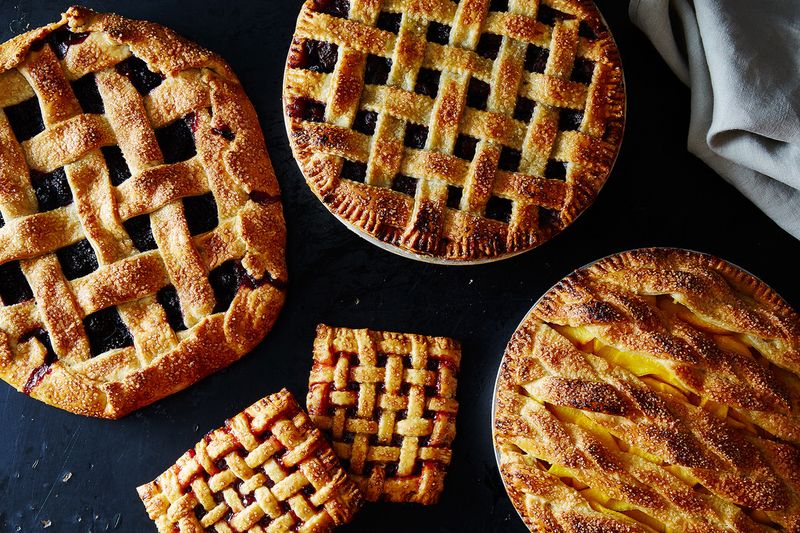
I covet the ease and conviction that these people possess. Though I am an experienced baker, I still get a wee bit intimidated when making certain things: scones, sourdough bread, annihilation that moms specialize in.
And pie—especially pie crust.

I have become semi-comfortable making pie crust by post-obit the ii aureate rules: employ common cold ingredients and don't overwork the dough. If I'g extra worried most impressing people, I'll blend the butter and flour in the food processor. Otherwise I just snap the butter in with my fingers because I like the experience of it, working rapidly, hardly breathing until the water ice h2o is added and the deejay of dough is chilling in the fridge. Then I roll it out just as quickly, sending a little prayer up to the butter and flour gods while I work.
My pies usually turns out perfectly okay. Sometimes they turn out fantabulous. Sometimes not. I brand pie an awful lot (birthdays, holidays, Sundays, thank-you lot-for-fixing-my-oven-days), and there have been many struggles and failures, typically regarding the crust. Maybe it was too crumbly, as well mucilaginous, or too dry. Maybe this has happened to you, too. And through trial (many trials) and error (many errors), as well equally a healthy dose of internet research, I have found some tricks to help fix pie chaff woes, both before and after they're in the oven. And I transfer my wisdom to you.
Here's how to set your pie crust problems if...
- Your dough is also crumbly.
- Your dough breaks when you printing information technology in the pan.
- Your crust shrinks when information technology bakes.
- Your crust is pale and underbaked.
- Your crust is too tough.
- Your (pie'southward) bottom is soggy.
- Your pecan pie's pecans have gone soft.
- Your pumpkin pie is cracked.
- Your fruit filling is too liquid-y.
- Your chaff is a total failure.
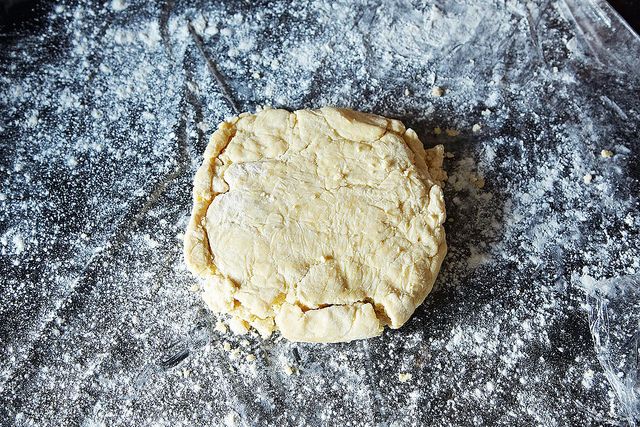
Your dough is too crumbly.
If your pie dough breaks and crumbles when you try to roll information technology out, it's probably too dry. This is a relatively easy set. Just sprinkle some cold water over the dough with your fingers and piece of work it in—gently!—until the dough comes together. If your dough gets too warm, transport it back into the fridge to arctic out. When y'all take it dorsum out, it should curlicue more hands.
Your dough breaks when yous press information technology in the pan.
Showtime of all, did you transfer the pie crust to the pan using the rolling pin method? To do this, put your rolling pin slightly to one side rolled-out dough circle, and so fold the dough over onto it. Lift the pivot and advisedly move the hanging dough over to the pie pan. Lay the rolling pin in the middle of the pan and unfold the dough, so press it in. It's so much easier than attempting to pick it up with your hands, which will merely effect in pain and disappointment.
Whether you used the rolling pivot method or non, a cleaved dough needs fixin'. The good news is you tin can cover-up tears relatively easily. After you lot've molded your crust into the pie pan, apply the scraps you pinched off of the edges to patch up any cracks, smoothing the seams with your fingers. If the tears are on the top crust or the edges, sprinkle on a footling bit of sugar to camouflage any imperfections. Printing it lightly onto the crust and bake.
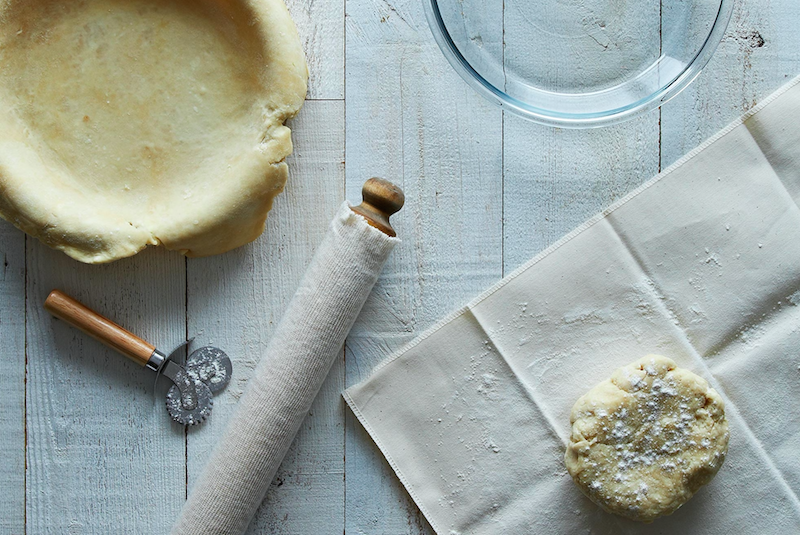
Your crust shrinks when it bakes.
If you pull a pie out of the oven and the crust has shrunk and hunched onto itself, it's a sign that you lot didn't allow information technology residuum before baking. Letting the dough rest is key because it allows the gluten to relax so that it doesn't seize upwardly and retract on y'all later. This is why most pie experts volition advise you lot to not but let your pie dough arctic before rolling it out but to permit it chill in the refrigerator for 15 minutes or so before baking, also.
You can't set a shrunken crust after the fact, but yous can definitely camouflage it with some whipped cream and a sprinkle of cinnamon or chocolate shavings. Or but serve the pie already sliced and plated, then your guests can't see how much it shrunk in the pan. No large.
Your crust is stake and underbaked.
Easy! Merely broil it some more than. To ensure a bronzed, shiny crust, I like to give the pie a quick brush with eggwash before sending it dorsum into the oven. Make sure your oven is hot enough: 425° F or 450° F is ideal. Just fix a timer first and then that you don't stop upwards with a burnt pie.
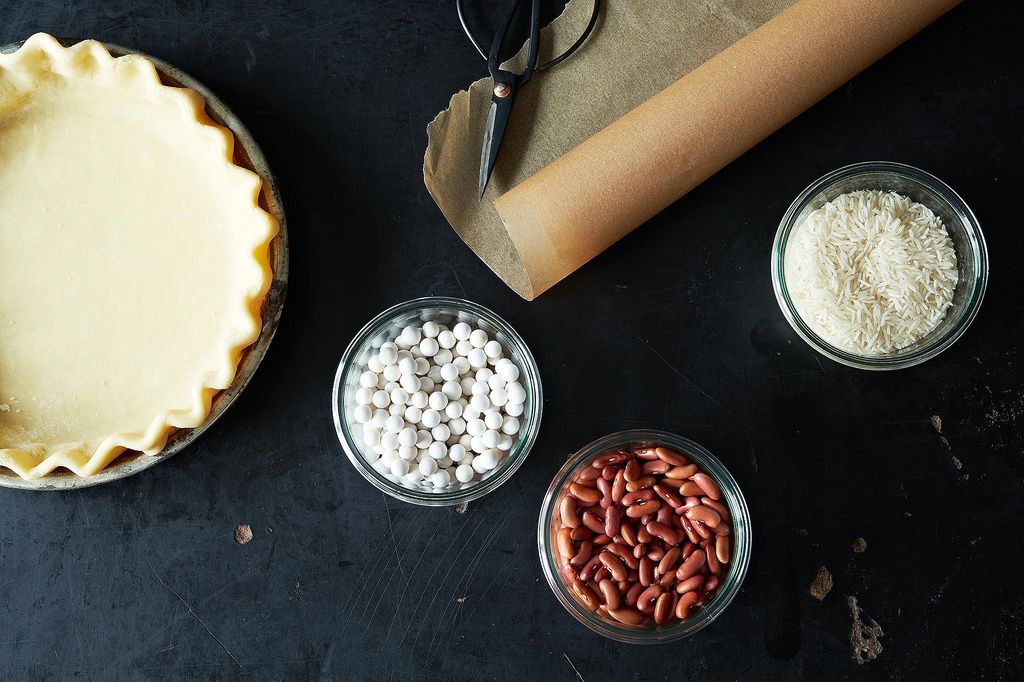
Your crust is likewise tough.
If your pie crust is tough instead of tender and flaky, yous probably either overworked the dough or added too much h2o to it. There's not much to do in this situation just plate up a slice and throw on a scoop of ice cream. Don't sweat information technology: You'll exercise better next fourth dimension.
Your (pie's) bottom is soggy.
There are a couple reasons you might have been a victim of S.B.S. (Soggy Bottom Syndrome). Maybe you lot needed to par-bake your crust. Maybe your filling was too liquidy. Perhaps you lot were watching "Oh Brother Where Art Thou?"while baking.
This is a tricky trouble to ready, but promise is not lost. If information technology's a fruit pie, try putting it dorsum in the oven for a few minutes on the very lesser rack, thus putting the underbaked bottom closer to the heat source. If it'south a custard pie, don't endeavour to re-bake information technology; y'all hazard compromising your lovely filling. Instead, scoop the insides into a glass serving dish and top with cookies or whipped cream. Looks, information technology'due south a trifle! That's totally what you intended all along, correct?
In the futurity, there are a few ways to avoid S.B.S.:
- It's helpful to broil your pie in a glass-bottom dish and so that you can run across when the bottom is bronzed to your liking.
- Ever par-broil the crust if the recipe calls for it.
- If your fruit filling seems extra moisture, drain off a little bit of liquid before adding it to the pan.
If yous're extra worried near soggy crusts (maybe you've had some bad experiences in the by), y'all tin sprinkle flour on the chaff before adding the filling, or even brush the dough with a beaten egg.
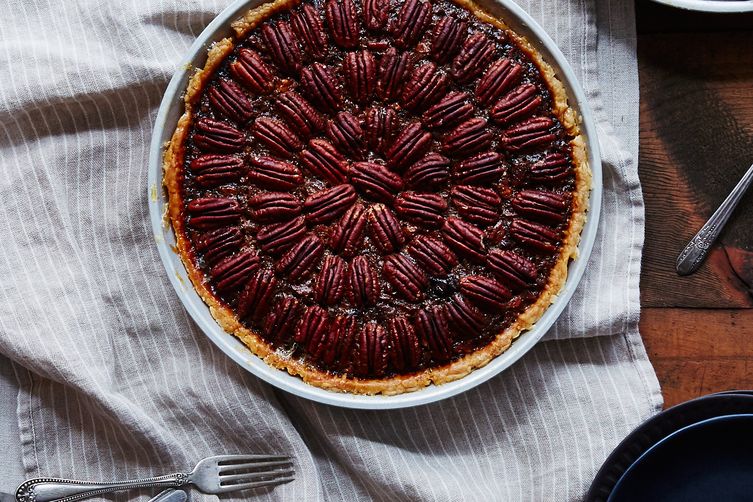
Your pecan pie's pecans have gone soft.
Whole pecans can cost an arm and a leg (unless yous have a pecan tree in your yard!), so it's a real bummer when they turn mushy and soft in your pie. To avoid this, toast your pecans before adding them to the syrupy, glutinous filling. Non only volition it fortify them against sogginess, it will also bring out their lovely, nutty flavor.
More: Vegan pecan pies deserve toasted nuts, too.
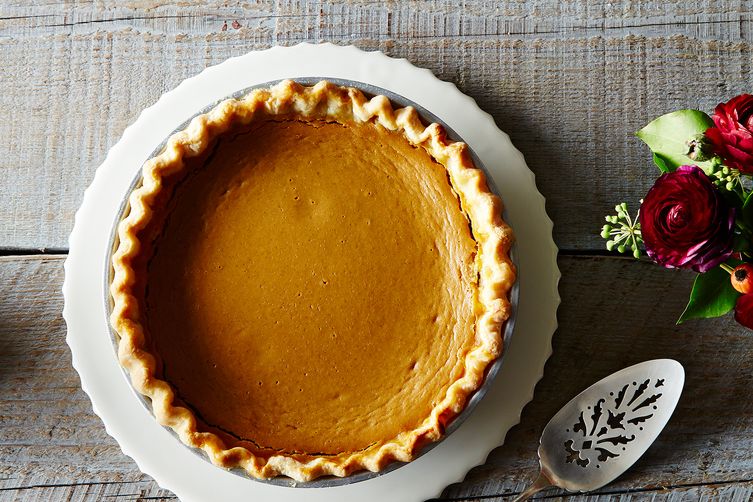
Your pumpkin pie is cracked.
Oops! You broiled it too long. It's best to take pumpkin pie (and sweetness potato pie, and cheesecake pie) out of the oven whenbutshy of completely prepare. About v minutes before the prescribed baking time is up, gently jiggle your pie. When the only part that moves is a ane-inch circumvolve in the middle, it's ready. The balance oestrus of the pie volition carry information technology through.
Now you lot know improve for next time. If you lot're worried almost being judged for your croaky pie facade, you can camouflage information technology hands. Tiptop your pie with crumbled ginger cookies, cover it with a facemask of whipped cream and a sprinkle of cinnamon, or layer on some softened apples. You only fabricated your pie evenameliorate.
Your fruit filling is too liquid-y.
First question: Did you let your pie set at to the lowest degree thirty minutes before cutting into information technology? You need to give the filling a little bit of time to settle in earlier slicing, or all of the fruit's juices will runneth gratuitous. If you did expect and your filling is however too liquidy, then, unfortunately, there's not much to do to fix information technology. Pie shake time!
In the future, if you fear your fruit filling will end upwardly a little wet (this is especially mutual with juicier fruits, like berries, especiallyif they are frozen), add a tablespoon of cornstarch before baking to thicken things up. Heads up: Adding cornstarch will make the filling a piffling bit cloudy. If this concerns you, invest in some tapioca starch instead, which dissolves articulate.
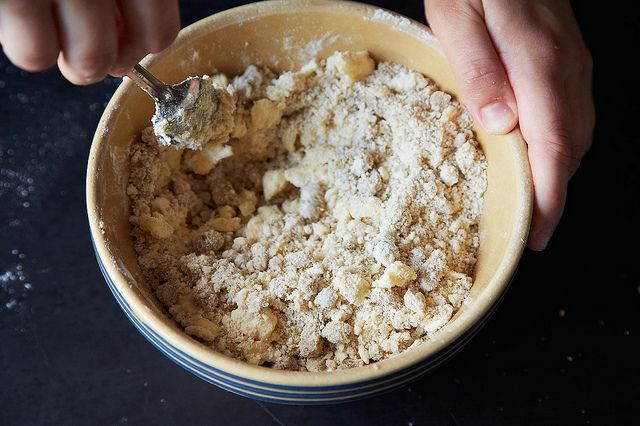
If all else fails and your pie crust is an utter disappointment.
If your pie is fruit-filled, you can always scrape the filling into a baking dish, tiptop it with a quick buttery crumble made with whatever'due south in your refrigerator, and bake it until it'southward bubbly. Or make a speedy press-in olive oil crust, which never fails yous. Or merely embrace the whole thing with so much whipped foam and water ice cream that no one notices. Or just cascade more vino.
After all, it's simply pie.
Practice you have more pie problems? Shout 'em out in the comments -- we'll put our heads together and see if we can come with a solution!
Source: https://food52.com/blog/14789-kitchen-rescue-how-to-fix-10-common-pie-problems
0 Response to "How to Make a Pillsbury Pie Crust Workable Again"
Post a Comment